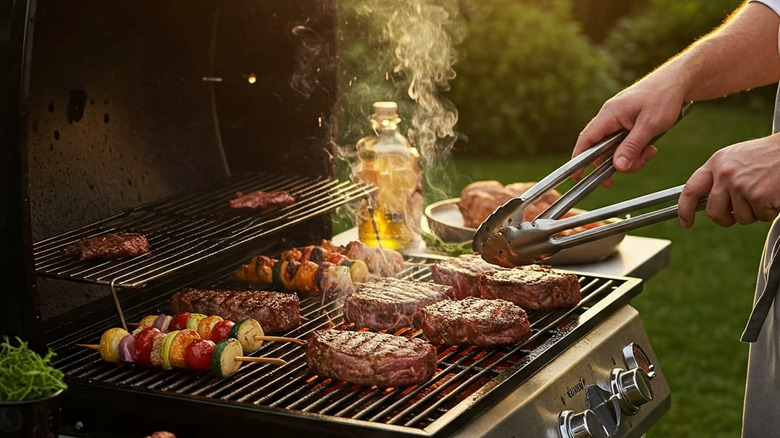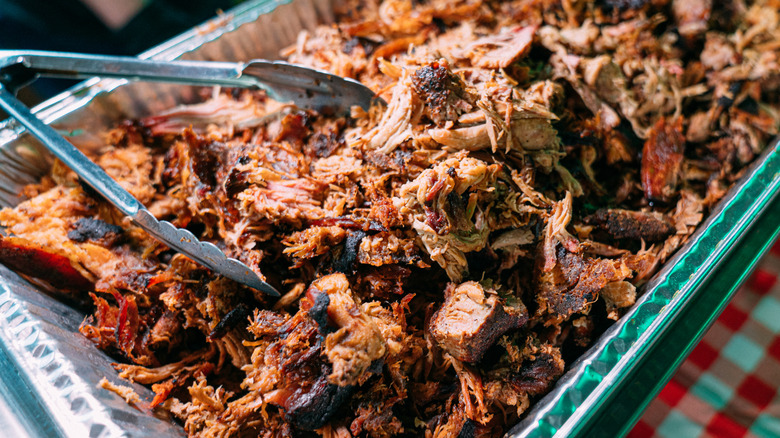Time To Grill? When To Let Your Meat Cook Low And Slow
We may receive a commission on purchases made from links.
Grilling a steak doesn't take too much time — the 3-3-2-2 method for pan-seared steaks calls for just 10 minutes of cooking (that's what the numbers add up to), while an outdoor barbecue takes about as long. The cuts that come out the juiciest, however, tend to be pricier ones like the ribeye, porterhouse, or filet mignon. There are some cuts of steak you should always marinate, but still others need a completely different cooking method. According to Scott Thomas, the Original Grillin' Fool and owner of The Grillin' Fools barbecue blog, "Highly marbled and very tender cuts ... just need a quick sear to be juicy and delicious." He explained, however, that brisket, pork shoulder, and other larger and potentially tougher pieces of meat require "a long, low-and-slow cook to make the meat pillowy soft and not burnt on the outside."
Thomas explained the history behind this, noting, "The entire reason for low-and-slow cooking was out of necessity. Rich people got the tender, juicy cuts from high on the animal ... This is where the saying 'living high on the hog' comes from. Rich people got those little-used muscles that only needed a little fire and seasoning to be delicious. Poor people were given the leftovers." That tougher meat, he said, required a longer cook time in order to break down the connective tissues, but the low heat meant it wouldn't burn.
Tips for low-and-slow cooking
Okay, so let's say you're grilling that brisket or pork shoulder. (Or better yet, smoking it — you can easily transform your grill into a smoker.) Before you start your low-and-slow cook, you'll probably want to coat your meat with a dry rub; Scott Thomas also suggested injecting it with a flavoring liquid. Without this help, he cautioned, "The thin outside layer of those large roasts will have the smoke flavor and the tasty bark, but the interior will be bland."
If you don't have a handy tool like the Grill Bump Barbecue Marinade Injector, Thomas said you can always season the meat again after you've cooked it. "I like to cook my pork shoulders in an aluminum pan to save the juices. After shredding a pork shoulder to make pulled pork, pour some of those juices over the top and dust with a little seasoning. Work the extra juices and seasoning throughout the meat," he advised. That way, every last bit is flavored — not just the exterior.
And speaking of this, Thomas reassured us that when the meat is done cooking, "The outside might look burnt, but that's called bark. When the seasoning, heat, smoke, and fat [are] rendered from the heat, all combine to form a black, tasty exterior to the roast, which is the tastiest part of barbecue."

